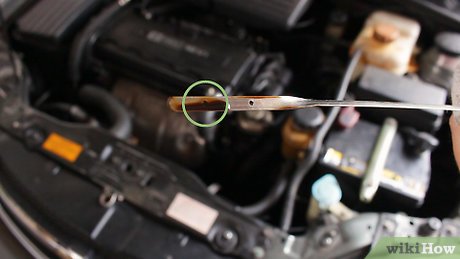
Keeping your car running smoothly requires regular maintenance, and one crucial aspect is ensuring the correct oil level. Oil lubricates engine parts, reducing friction and wear, ultimately extending your vehicle’s lifespan. However, there are specific times and methods for adding oil that ensure safety and effectiveness. This article will guide you through the process of checking and adding oil to your car, emphasizing best practices and safety precautions.
This comprehensive guide will delve into the optimal time to add oil, demonstrate how to accurately check your oil level, and provide step-by-step instructions on safely adding oil to your engine. We’ll also highlight the importance of consulting your vehicle’s owner’s manual for specific recommendations tailored to your car model.
When to Add Oil
Adding oil to your car is not a routine task you perform daily. Instead, it’s essential to monitor your oil level regularly and add oil only when necessary. Here are some key indicators that it’s time to check your oil:
- Low Oil Level Warning Light: Your dashboard will illuminate a warning light if the oil level drops below a safe threshold. This is a clear signal to stop driving immediately and check your oil level.
- Regular Maintenance Schedule: Consult your vehicle’s owner’s manual for recommended oil change intervals. Between oil changes, it’s wise to periodically check your oil level, especially before long trips.
- Visible Oil Leaks: If you notice any signs of oil leaking under your car, such as dark spots on the driveway or a greasy residue, it’s crucial to address the leak promptly and add oil as needed.
Remember, adding oil too frequently can lead to overfilling, which can be just as detrimental as running low on oil.
How to Check Oil Level
Checking your oil level is a simple process that should be performed regularly. Here’s how to do it accurately:
- Park on a Level Surface: Ensure your car is parked on a flat surface to obtain an accurate reading.
- Turn Off the Engine and Wait: Allow the engine to cool down for at least five minutes before checking the oil level. Hot oil can cause burns and provide inaccurate readings.
- Locate the Dipstick: The dipstick is usually a brightly colored handle (often yellow or orange) located near the engine block. Pull it out carefully.
- Wipe Clean: Use a clean cloth or paper towel to wipe off the dipstick completely.
- Reinsert and Remove Again: Push the dipstick all the way back into its tube, then remove it again.
- Read the Level: The dipstick will have two marks indicating the minimum and maximum oil levels. The oil level should fall between these two marks.
Adding Oil Safely
If your oil level is low, adding oil safely is crucial to prevent engine damage. Follow these steps:
- Choose the Right Oil: Consult your vehicle’s owner’s manual for the recommended oil type and viscosity (thickness). Using the incorrect oil can harm your engine.
- Use a Funnel: A funnel helps prevent spills and ensures that oil flows directly into the engine.
- Add Slowly: Add oil in small increments, checking the dipstick frequently to avoid overfilling.
- Check for Leaks: After adding oil, inspect the area around the oil filler cap and drain plug for any leaks.
Importance of Owner’s Manual
Your vehicle’s owner’s manual is an invaluable resource for understanding your car’s specific requirements, including oil type, capacity, and recommended maintenance intervals. Always refer to your owner’s manual for detailed instructions on checking and adding oil to your car.
Conclusion
Maintaining the correct oil level in your car is essential for optimal engine performance and longevity. By following the guidelines outlined in this article, you can safely and effectively check and add oil when needed. Remember to consult your owner’s manual for specific recommendations tailored to your vehicle model. Regularly checking your oil level and addressing any issues promptly will contribute to a healthier and more reliable driving experience.
